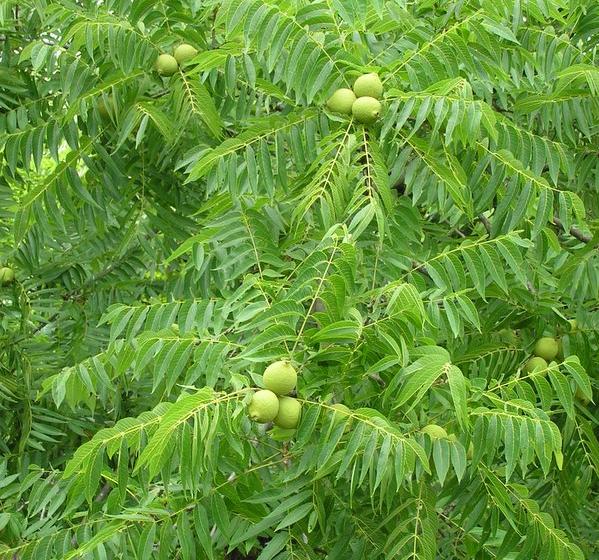
Here’s what black walnuts look like on the tree in July.
If you like to eat them, choose your favorite black walnut tree now and watch in early fall for the green husks to turn yellow-green. You’ll then have a brief opportunity to collect the nuts before the squirrels get them.
Your next challenge will be to remove the husks and expose the shell beneath. Don’t procrastinate or the over-ripe husks will spoil the nuts’ flavor.
Husking black walnuts is a difficult and messy task. The husks are really hard to remove and they leave a stain. Suggestions on husk removal range from hammers to gravel slurries to running over the nuts with your car (this last one is a bad idea).
The process is so messy that you’ll want helpers. If you’re really smart you’ll make it a Tom Sawyer moment and convince your friends to do it for you. This happened to me when I was ten years old.
That year a new family moved into our neighborhood from Georgia and the kids joined our neighborhood group. One day the mom gave us kids a fun job to do. She supplied us with hammers and bricks and a big bucket of black walnuts. We went to work hammering and smashing the husks on the driveway. We didn’t even think about the mess until we looked at our hands and clothes. Stained!
We went indoors to wash up but the stains remained. When I got home it was easy to explain what I’d been up to.
I remember thinking at the time that black walnut husking must be some strange custom from Georgia. I’d never encountered anyone else who did it. And now I know why.
(photo by Dianne Machesney)
What a funny story! Does this explain why I see squirrels with black stains around their mouths in the fall? No joke – there are walnut trees next door and it’s funny watching the squirrels run around carrying the walnuts, their jaws open so wide they look unhinged. It never occurred to me that it’s the walnuts that stain their mouths.
ah, but black walnut is one of the loveliest natural dyes available! you can leave a bunch of black walnuts in a bucket of water and as the dye leaches out you will have a tub of rich brown dye for coloring any natural fiber. the Cherokee of NC use black walnut to dye river cane for their basketry.
And Black walnut is a fine ingredient to substitute making basil pesto. Of course, you could buy a small packet already cleaned.